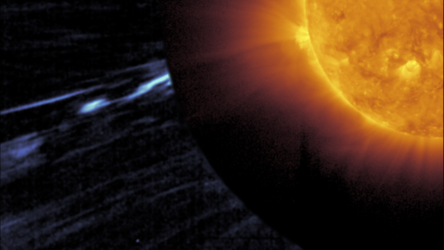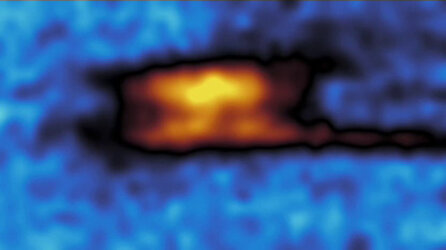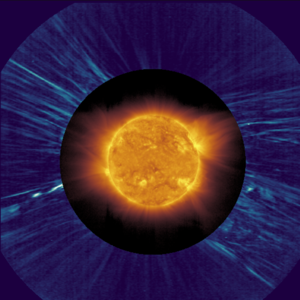Accept all cookies Accept only essential cookies See our Cookie Notice

About ESA
The European Space Agency (ESA) is Europe’s gateway to space. Its mission is to shape the development of Europe’s space capability and ensure that investment in space continues to deliver benefits to the citizens of Europe and the world.
Highlights
ESA - United space in Europe
This is ESA ESA facts Member States & Cooperating States Funding Director General Top management For Member State Delegations European vision European Space Policy ESA & EU Space Councils Responsibility & Sustainability Annual Report Calendar of meetings Corporate newsEstablishments & sites
ESA Headquarters ESA ESTEC ESA ESOC ESA ESRIN ESA EAC ESA ESAC Europe's Spaceport ESA ESEC ESA ECSAT Brussels Office Washington OfficeWorking with ESA
Business with ESA ESA Commercialisation Gateway Law at ESA Careers Cyber resilience at ESA IT at ESA Newsroom Partnerships Merchandising Licence Education Open Space Innovation Platform Integrity and Reporting Administrative Tribunal Health and SafetyMore about ESA
History ESA Historical Archives Exhibitions Publications Art & Culture ESA Merchandise Kids Diversity ESA Brand Centre ESA ChampionsLatest
Space in Member States
Find out more about space activities in our 23 Member States, and understand how ESA works together with their national agencies, institutions and organisations.
Science & Exploration
Exploring our Solar System and unlocking the secrets of the Universe
Go to topicAstronauts
Missions
Juice Euclid Webb Solar Orbiter BepiColombo Gaia ExoMars Cheops Exoplanet missions More missionsActivities
International Space Station Orion service module Gateway Concordia Caves & Pangaea BenefitsLatest
Space Safety
Protecting life and infrastructure on Earth and in orbit
Go to topicAsteroids
Asteroids and Planetary Defence Asteroid danger explained Flyeye telescope: asteroid detection Hera mission: asteroid deflection Near-Earth Object Coordination CentreSpace junk
About space debris Space debris by the numbers Space Environment Report In space refuelling, refurbishing and removingSafety from space
Clean Space ecodesign Zero Debris Technologies Space for Earth Supporting Sustainable DevelopmentLatest
Applications
Using space to benefit citizens and meet future challenges on Earth
Go to topicObserving the Earth
Observing the Earth Future EO Copernicus Meteorology Space for our climate Satellite missionsCommercialisation
ESA Commercialisation Gateway Open Space Innovation Platform Business Incubation ESA Space SolutionsEnabling & Support
Making space accessible and developing the technologies for the future
Go to topicBuilding missions
Space Engineering and Technology Test centre Laboratories Concurrent Design Facility Preparing for the future Shaping the Future Discovery and Preparation Advanced Concepts TeamSpace transportation
Space Transportation Ariane Vega Space Rider Future space transportation Boost! Europe's Spaceport Launches from Europe's Spaceport from 2012Latest

How a solar switchback is formed
Thank you for liking
You have already liked this page, you can only like it once!
Solar Orbiter has made the first ever remote sensing observation of a magnetic phenomenon called a solar ‘switchback’, proving their origin in the solar surface and pointing to a mechanism that might help accelerate the solar wind.
The central image shows the Sun as seen by the ESA/NASA Solar Orbiter spacecraft’s Extreme Ultraviolet Imager (EUI) instrument on 25 March 2022. An active region on the Sun is indicated, which is thought to be the source of the observed ‘switchback’ identified in the solar corona by the Metis instrument.
An analysis of the outflow velocity in the corona shows that the switchback corresponds to very slow-moving plasma (image at right). This links it to the active region as such slow speeds would be expected above an active region that has yet to release its stored energy.
The magnetic field line sketches show the chain of events that are thought to be taking place in the magnetic field lines to generate the switchback. Active regions on the Sun can feature open and closed magnetic field lines. The closed lines arch up into the solar atmosphere before curving round back into the Sun. The open field lines connect with the interplanetary magnetic field of the Solar System. When an open magnetic region interacts with a closed region, the magnetic field lines can reconnect, creating an approximately S-shape field line and producing a burst of energy. As the field line responds to the reconnection and the release of energy, a kink is set propagating outwards. This is the switchback. A similar switchback is also sent in the opposite direction, down the field line and into the Sun.
This is the first ever remote sensing observation of a switchback, and may provide a mechanism that might help accelerate the solar wind.
-
CREDIT
Credit: Work performed by ATG under contract for ESA, based on data from ESA & NASA/Solar Orbiter/EUI & Metis Teams and D. Telloni et al. (2022); Zank et al. (2020). -
LICENCE
CC BY-SA 3.0 IGO or ESA Standard Licence
(content can be used under either licence)

Zooming in on a solar switchback

Solar switchback mystery solved

Switchback in action

Capturing a solar switchback















 Germany
Germany
 Austria
Austria
 Belgium
Belgium
 Denmark
Denmark
 Spain
Spain
 Estonia
Estonia
 Finland
Finland
 France
France
 Greece
Greece
 Hungary
Hungary
 Ireland
Ireland
 Italy
Italy
 Luxembourg
Luxembourg
 Norway
Norway
 The Netherlands
The Netherlands
 Poland
Poland
 Portugal
Portugal
 Czechia
Czechia
 Romania
Romania
 United Kingdom
United Kingdom
 Slovenia
Slovenia
 Sweden
Sweden
 Switzerland
Switzerland

























